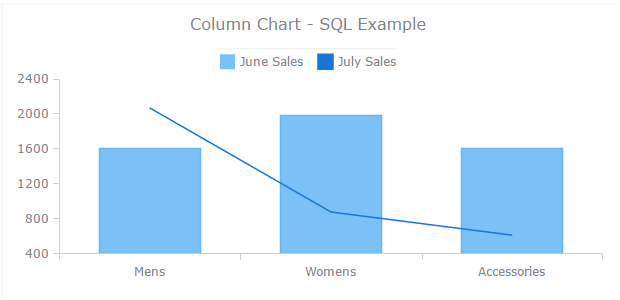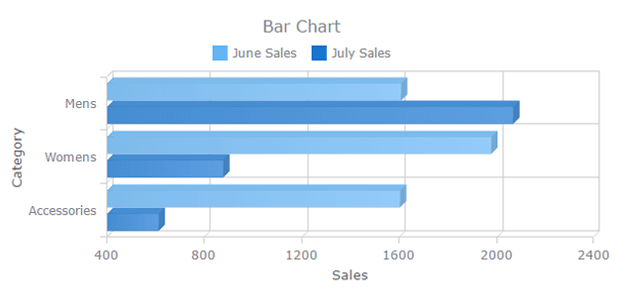

- #EXAMPLES OF ANYCHART APEX PLUGIN INSTALL#
- #EXAMPLES OF ANYCHART APEX PLUGIN CODE#
- #EXAMPLES OF ANYCHART APEX PLUGIN SERIES#
- #EXAMPLES OF ANYCHART APEX PLUGIN DOWNLOAD#
Browse the plugins at apex.world, and install a few that seem interesting to you.Look at how the plugins are used in the application.
#EXAMPLES OF ANYCHART APEX PLUGIN CODE#
Look through each attribute and examine the code read the help for each attribute as well. Install the Sample Database Application – go into its Shared Components -> Plugins, and look at each of the plugins therein.The two sources I would recommend you look at are:

In my opinion, a great way to get started learning about plugins is to examine a lot of plugins that others have created. It may be copied to another application, or exported as a SQL script for importing into an application in another workspace or another APEX instance. It is a self-contained set of attributes, code, and (optionally) file attachments.

When used, it generates a Region, an Item, a Process, or a Dynamic Action or, it may implement an Authentication or Authorization Scheme. What is an APEX Plugin?Īn APEX Plugin is a Shared Component that can be used in any number of pages in the application. This post is mostly based on a talk given in October 2019 at the Australian Oracle User Group conference in Perth, Western Australia. This is where an APEX plugin could be a suitable solution. When you encounter the requirement a third time, you should be asking yourself, “how can I make this code more re-usable” – because chances are one day you’ll need to fix a bug or make an enhancement to that code, and you’ll want it to be easy to deploy the change wherever it has been used. The first time you encounter this you will probably just do a “copy and paste” to replicate the custom code. However, there will come a time when some custom code is required, whether some special data processing (using PL/SQL), some special user interface styling (using CSS), or some special user interface behaviour (using JavaScript or jQuery).Īfter you have built an application with (a minimum of) custom code like this, it sometimes happens that the same user requirement crops up again elsewhere whether on another page, another application, or another workspace. “low code”) of the tool will result in applications that are easy to maintain and resistant to regression issues when upgrading. Restricting yourself to only the built-in, declarative features (i.e. The development platform has an excellent range of built-in functionality and components so that almost all user requirements can be covered using standard APEX features. Every asset including icon/css is bundled in the js itself to avoid loading multiple files.There is a great deal you can build in APEX without even thinking about using a plugin.
#EXAMPLES OF ANYCHART APEX PLUGIN DOWNLOAD#
The download bundle includes the following files and directories providing a minified single file in the dist folder. The grid is available in most of your favorite frameworks:Īngular Data Grid | React Data Grid | Blazor Data Grid | Web Components DataGrid | jQuery Data Grid What's included We partnered with Infragistics, creators of the fastest data grids on the planet! Ignite UI Grids can handle unlimited rows and columns of data while providing access to custom templates and real-time data updates.įeaturing an intuitive API for easy theming and branding, you can quickly bind to data with minimal hand-on coding. Need Advanced Data Grid for your next project? Utilize sparklines to indicate trends in data, for example, occasional increments or declines, monetary cycles, or to feature the most extreme and least values:

The tiny gauges are an important part of a dashboard and are useful in displaying single-series data. Frequently used with bigger data collections, they are valuable for recognizing patterns and areas of focus. Use Heatmaps to represent data through colors and shades. The below image shows how you can use another chart as a brush/preview pane which acts as a handle to browse the main candlestick chart. Use a candlestick chart (a common financial chart) to describe price changes of a security, derivative, or currency. Possible combinations can be line/area/column together in a single chart. You can combine more than one chart type to create a combo/mixed chart. Valuable to expand the visual appeal of your chart and make it more informative.
#EXAMPLES OF ANYCHART APEX PLUGIN SERIES#
Make selections and load other charts using those selections.Īnother approach is to Drill down charts where one selection updates the data of other charts.Īn example of loading dynamic series into charts is shown belowĪnnotations allow you to write custom text on specific values or on axes values. You can create a combination of different charts, sync them and give your desired look with unlimited possibilities.īelow is an example of synchronized charts with github style. querySelector ( '#chart' ), options ) chart. Var options = var chart = new ApexCharts ( document.


 0 kommentar(er)
0 kommentar(er)
